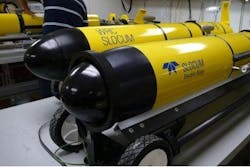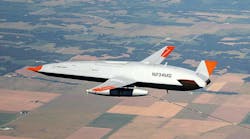WASHINGTON – The U.S. Navy seeks to upgrade its fleet of unmanned underwater sensor gliders, devices used to provide data to attack submarines. UPI reports. Continue reading original article
The Military & Aerospace Electronics take:
8 March 2021 -- The system would improve the current Littoral Battlespace Sensing Glider (LBS-G), which generally deploy from oceanographic survey ships and would measure water conditions in areas to help fleet operational planning or hunt enemy submarines.
About 180 sensor gliders are in use by the Navy, and manufactured by defense contractor Teledyne Brown Engineering of Huntsville, Ala. The request classifies the drone under "Search, Detection, Navigation, Guidance, Aeronautical, and Nautical System and Instrument Manufacturing" categories.
The new LBS-G gliders will be expected to operate for 90 days at a time, dive to 657 feet, spend much of its time at the bottom of the sea, surface when it needs to transmit data to a satellite and take water samples every two seconds.
Related: Navy researchers choose underwater glider UUV sensors from AML Oceanographic
John Keller, chief editor
Military & Aerospace Electronics



